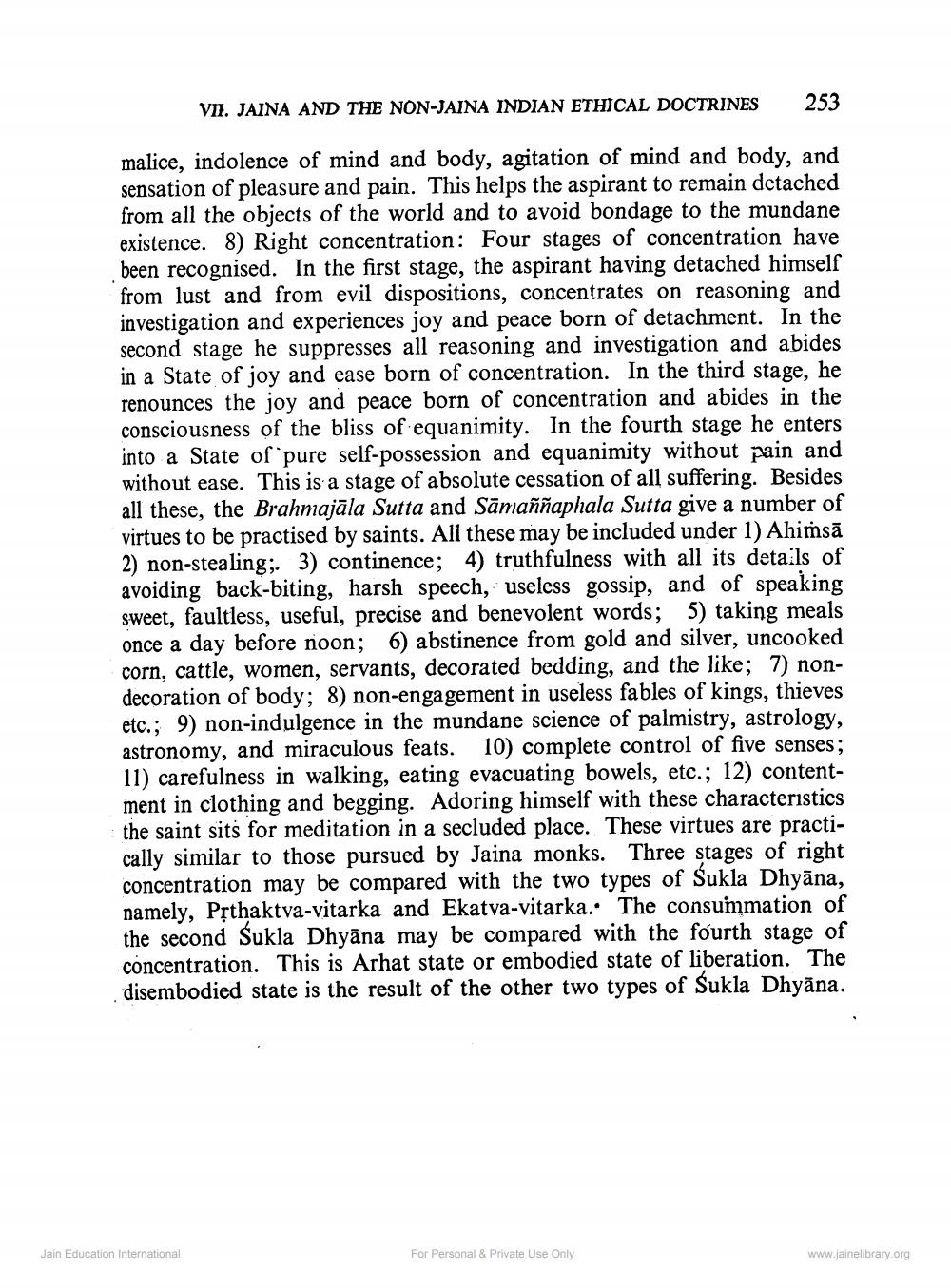________________
VII. JAINA AND THE NON-JAINA INDIAN ETHICAL DOCTRINES
253
malice, indolence of mind and body, agitation of mind and body, and sensation of pleasure and pain. This helps the aspirant to remain detached from all the objects of the world and to avoid bondage to the mundane existence. 8) Right concentration: Four stages of concentration have been recognised. In the first stage, the aspirant having detached himself from lust and from evil dispositions, concentrates on reasoning and investigation and experiences joy and peace born of detachment. In the second stage he suppresses all reasoning and investigation and abides in a State of joy and ease born of concentration. In the third stage, he renounces the joy and peace born of concentration and abides in the consciousness of the bliss of equanimity. In the fourth stage he enters into a State of pure self-possession and equanimity without pain and without ease. This is a stage of absolute cessation of all suffering. Besides all these, the Brahmajāla Sutta and Sāmaññaphala Sutta give a number of virtues to be practised by saints. All these may be included under 1) Ahimsā 2) non-stealing;, 3) continence; 4) truthfulness with all its details of avoiding back-biting, harsh speech, useless gossip, and of speaking sweet, faultless, useful, precise and benevolent words; 5) taking meals once a day before noon; 6) abstinence from gold and silver, uncooked corn, cattle, women, servants, decorated bedding, and the like; 7) nondecoration of body; 8) non-engagement in useless fables of kings, thieves etc.; 9) non-indulgence in the mundane science of palmistry, astrology, astronomy, and miraculous feats. 10) complete control of five senses; 11) carefulness in walking, eating evacuating bowels, etc.; 12) contentment in clothing and begging. Adoring himself with these characteristics the saint sits for meditation in a secluded place. These virtues are practically similar to those pursued by Jaina monks. Three stages of right concentration may be compared with the two types of Sukla Dhyāna, namely, Přthaktva-vitarka and Ekatva-vitarka.. The consummation of the second Sukla Dhyāna may be compared with the fourth stage of concentration. This is Arhat state or embodied state of liberation. The disembodied state is the result of the other two types of Sukla Dhyāna.
Jain Education International
For Personal & Private Use Only
www.jainelibrary.org




